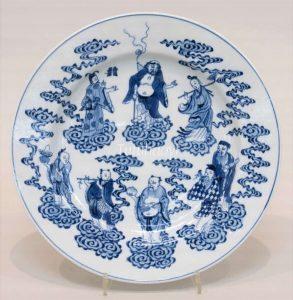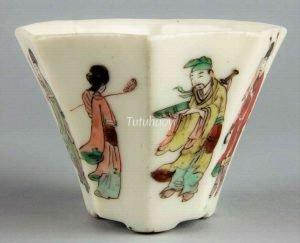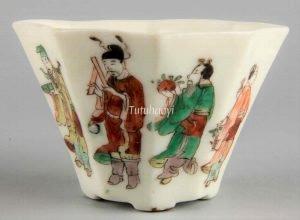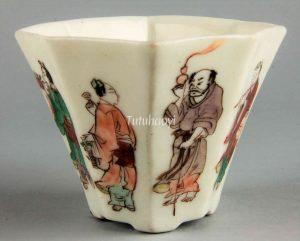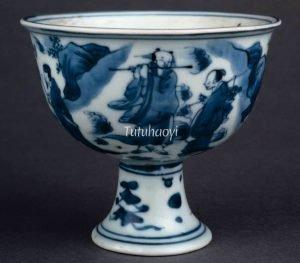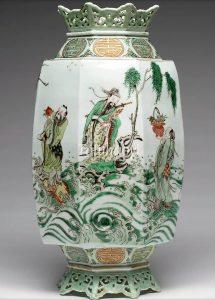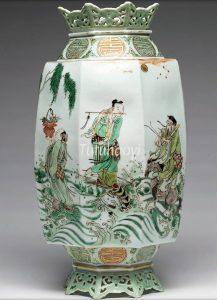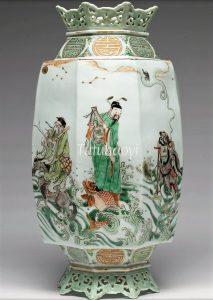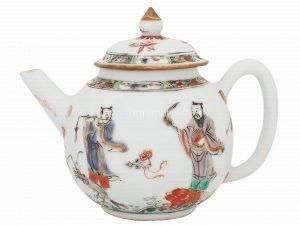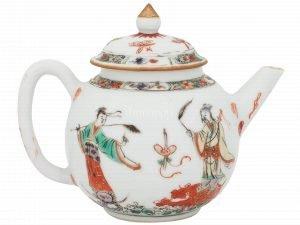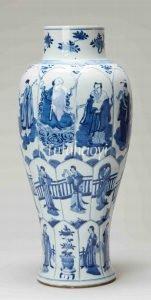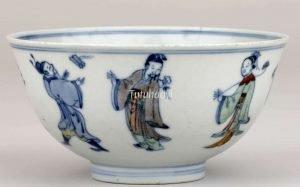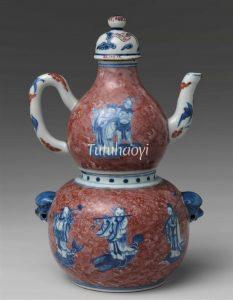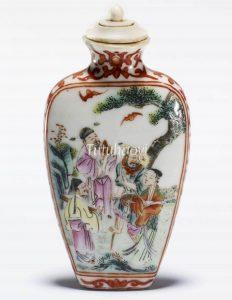Eight Daoist Immortals
八仙
© Tutuhaoyi.com owns the copyright of the description content for the images attached. Quoting all or part of the description content on this page is permitted ONLY IF ‘Tutuhaoyi.com’ is clearly acknowledged anywhere your quote is produced unless stated otherwise. (本页描述内容版权归Tutuhaoyi.com所有,转发或引用需注明 “Tutuhaoyi.com”, 侵权必究, 已注开源信息的条目除外。)
The Eight Immortals (八仙 ba xian, in Chinese) are eight colourful Daoist personalities well-known in Chinese popular culture for over seven hundred years. 仙 (xian) in Chinese means ‘those who have achieved longevity, immortality, and enlightenment’ and their artistic characterisation in extant dates back as early as the 3rd-century BCE, as ‘a male figure riding on a dragon’. Xian immortals can live on air and dew, fly without wings, and are resistant to the harmful effects of the elements. They possess many desirable traits in human society such as being free from anxiety, acting with spontaneity, and even forever having skin as smooth as that of a baby.
The Eight Immortals represent a wide spectrum of the society: male and female, rich and privileged and poor and downtrodden, old and young. They are Zhongli Quan (钟离权, or 汉钟离), Lv Dongbin (吕洞宾, or Lü Dongbin), Cao Guojiu (曹国舅), Han Xiangzi (韩湘子), He Xiangu (何仙姑), Lan Caihe (蓝采和), Li Tieguai (李铁拐), Zhang Guolao (张果老). Each of the Eight Immortals typically has specific emblems as his or her distinctive attribute. Zhongli Quan holds a fan or peach. Lv Dongbin has a sword. Cao Guojiu carries a clapper of several long, flat pieces of wood, or an official’s writing tablet in court, hu (笏). Han Xiangzi plays a bamboo flute. He Xian’gu, the only female among the eight, carries a stem of lotus flower or a long-handled bamboo colander. Lan Caihe has a basket of flowers. Li Tieguai leans on his iron crutch with a gourd often in his hand. Zhang Guolao, the oldest among the eight, is usually identified with his membranophone fish drum (渔鼓 yugu). These emblems can be used independently in decoration as the ‘Covet Eight Immortals (暗八仙 an ba xian)’.
Fig 1: porcelain dish with underglaze blue decoration, Qing dynasty (1644–1911), courtesy of the Metropolitan Museum of Art, New York
Fig 2-5: porcelain cup with overglaze enamelled decoration, Jiajing period (1522–66), Ming dynasty, courtesy of the Metropolitan Museum of Art, New York
Fig 6: stem porcelain cup with underglaze blue decoration, late 16th century, courtesy of the Trustees of the British Museum, London
Fig 7: porcelain bowl with overglaze enamelled decoration, 1628–1660 (circa), courtesy of the Trustees of the British Museum, London
Fig 8: porcelain dish with underglaze blue and overglaze enamelled decoration, Shunzhi period (1644–61), Qing dynasty, courtesy of the Sir Michael Butler Collection
Fig 9: porcelain bowl with underglaze blue decoration, Kangxi period (1662–1722), Qing dynasty, courtesy of the Metropolitan Museum of Art, New York
Fig 10-13: porcelain lantern with overglaze enamelled decoration, Kangxi period (1662–1722), Qing dynasty, courtesy of the Walters Art Museum, Baltimore
Fig 14-15: porcelain teapot with overglaze enamelled decoration, Kangxi period (1662–1722), Qing dynasty, courtesy of the Jie Rui Tang Collection
Fig 16-17: baluster jar with underglaze blue decoration, 17th –18th century, courtesy of Minneapolis Institute of Art
Fig 18: porcelain vase with overglaze enamelled decoration, 1701–1722 (circa), Kangxi period, Qing dynasty, courtesy of the Trustees of the British Museum, London
Fig 19: porcelain bowl with overglaze enamelled decoration, 18th century, courtesy of the Trustees of the British Museum, London
Fig 20-21: wine vessel with underglaze blue and red decoration, Yongzheng period (1723–35), Qing dynasty, courtesy of the Metropolitan Museum of Art, New York
Fig 22-23: famille rose snuff-bottle, 1770–1796, Qianlong period, Qing dynasty, courtesy of the Trustees of the British Museum, London
